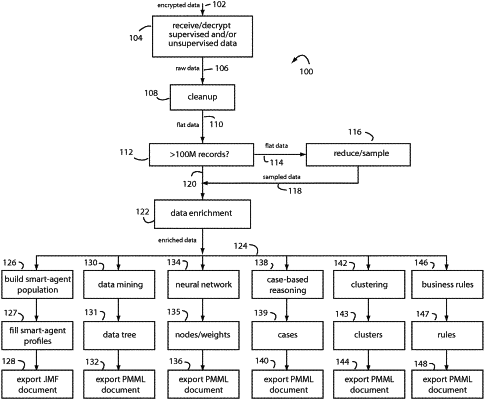| CPC G06N 20/00 (2019.01) [G06F 16/215 (2019.01); G06N 5/04 (2013.01)] | 20 Claims |

|
1. A computer-implemented method for training a predictive model, comprising:
receiving, at one or more processors, a record including a plurality of data fields;
determining, via the one or more processors, that a data field of the plurality of data fields includes invalid contents using a data dictionary;
generating a revised record based on the record at least in part by substituting, via the one or more processors, a replacement data value for the invalid contents of the data field based on the corresponding determination of invalidity;
generating, via the one or more processors, a record file comprising a plurality of records including the revised record;
executing, via the one or more processors, a computer learning training algorithm to train the predictive model based on the record file, the predictive model—
comprising a plurality of smart agents and a classification model including one or more of data mining logic, a neural network, case-based-reasoning, clustering, and business rules,
being configured to combine a plurality of scores into a single predictive result.
|